As part of the current Group Run-through of Foundations we have just finished looking at setup – whether to start our sketches with some pencil guidelines or not and how to sight measure.
There are a lot of people who are against using pencil guidelines and believe that you should only draw directly in ink. Whilst I think that working ‘direct to ink’ is a great skill to have, I don’t believe it is the only way to sketch.
My preference is what I call gestural setup – a quick loose outline of the main elements of my subject that enables me to explore my subject (feeling its edges), work out what I want to record on the page and map out the overall composition on the page. I like the fact that this initial response is visible in the final sketch (as a record of my process of observation) so I often do this setup in a coloured pencil (normally a watercolour pencil). The above sketchof my palette I did during last night’s livestream to demonstrate this approach and you can see how I adjusted the position and shape of my water container when I drew in ink.
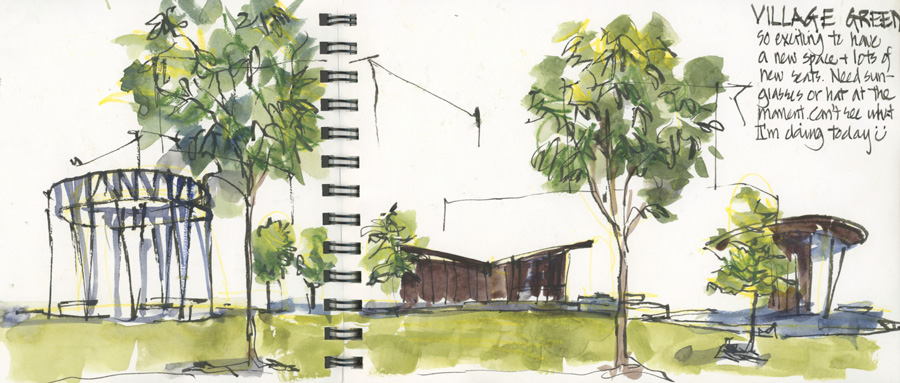
Earlier in the week I sketched the brand new Village Green in my local area – starting with a few yellow watercolour pencil lines. I then made a few adjustments when drawing in ink. Just for the record, I was sitting in the full sun (middle of the day), looking into the sun while doing this and I was really struggling to see what I was doing. Sigh, I know better than to attempt this without a hat and/or sunglasses!
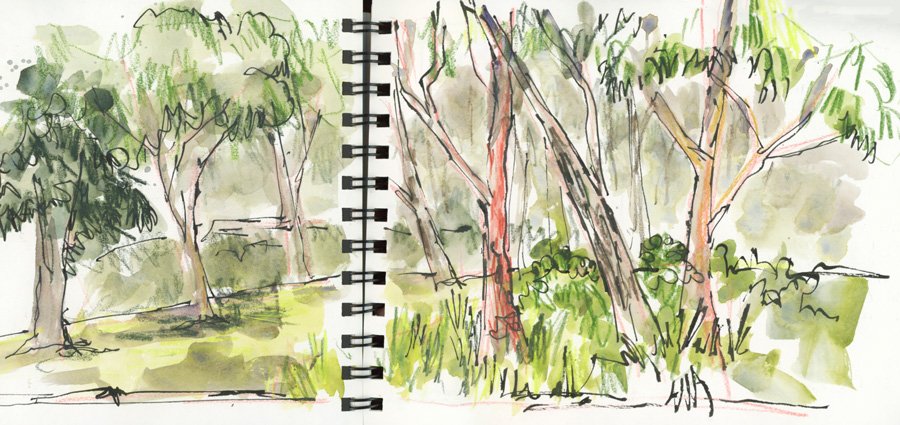
Another example of visible setup lines is this recent Lane Cove sketch where I drew first in a pink pencil.
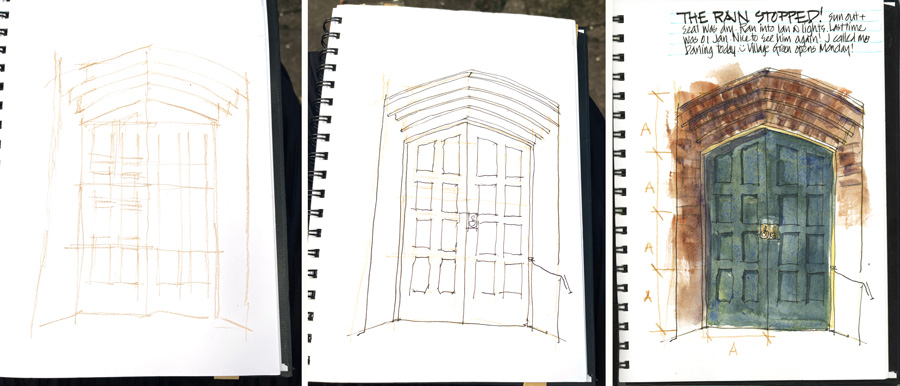
Last week we looked at sight measuring. Over the years I have met many sketchers who have never learnt how to do this and as a result, they often don’t know how to improve the accuracy of their sketches. So I firmly believe it’s an essential skill to develop and it was wonderful to be teaching it again. It was also fun to do measured version of the green door of St Albans (something I do a lot of sketches of) and actually get all the door panels in the right place.
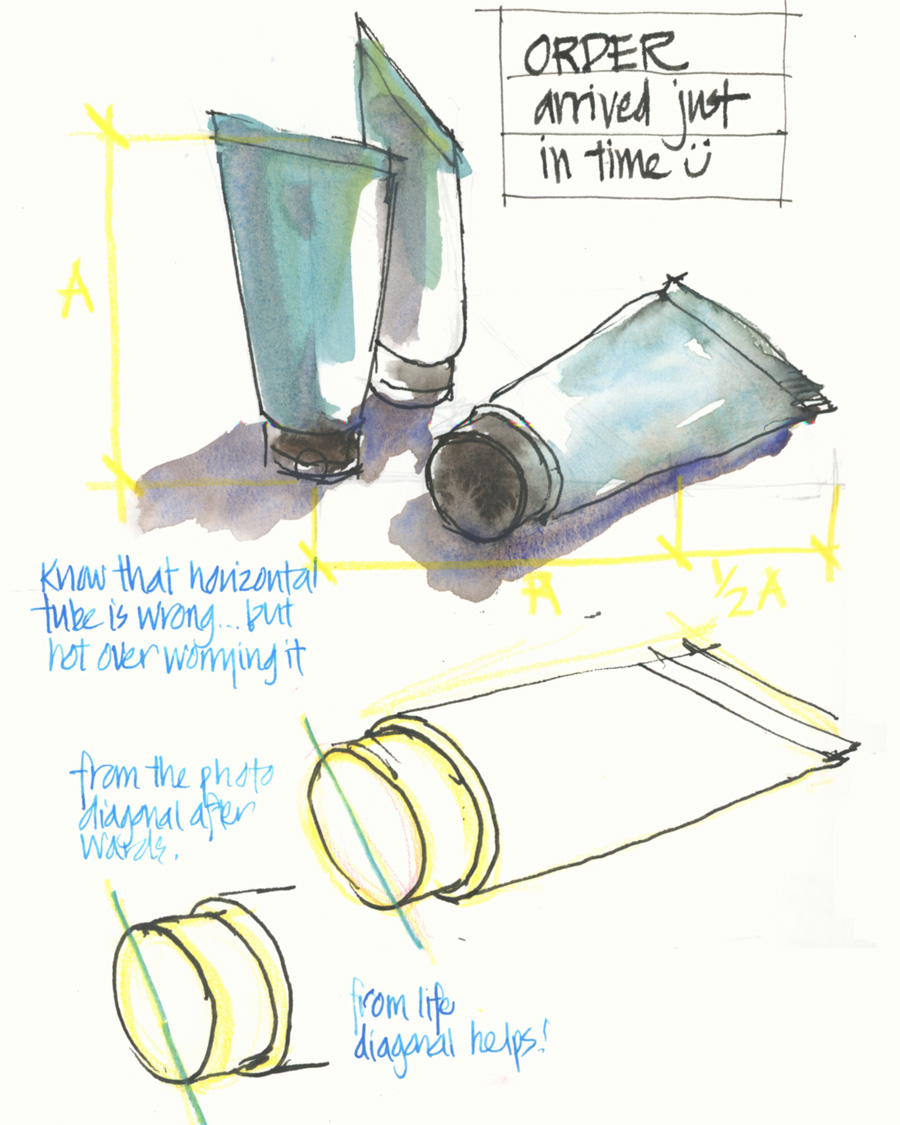
In the process of doing the indoor exercise (sketching some tubes and knowing that my circles were not right) I did some research and then had a huge lightbulb moment!
I’m not sure that I have ever come across this rule before and it was fun to share this with the group last week. If you have signed up for Foundations at any time you might want to check out my video explanation – the replay of the livestream can be found in part 5.13.
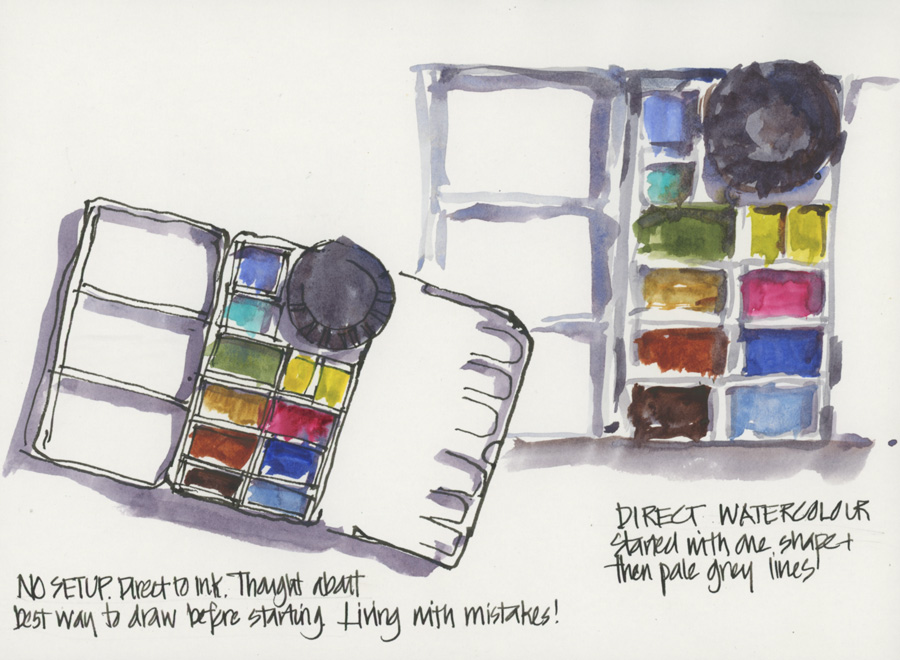
The other part of this section of the course is all about no setup, so here are two more versions of my palette from the live session last night – direct ink and direct watercolour.
Ah! it’s been so wonderful to go through the Foundations lessons again. I’m getting so much out of it and the community energy makes it even more special. A huge thanks to everyone who is part of it!

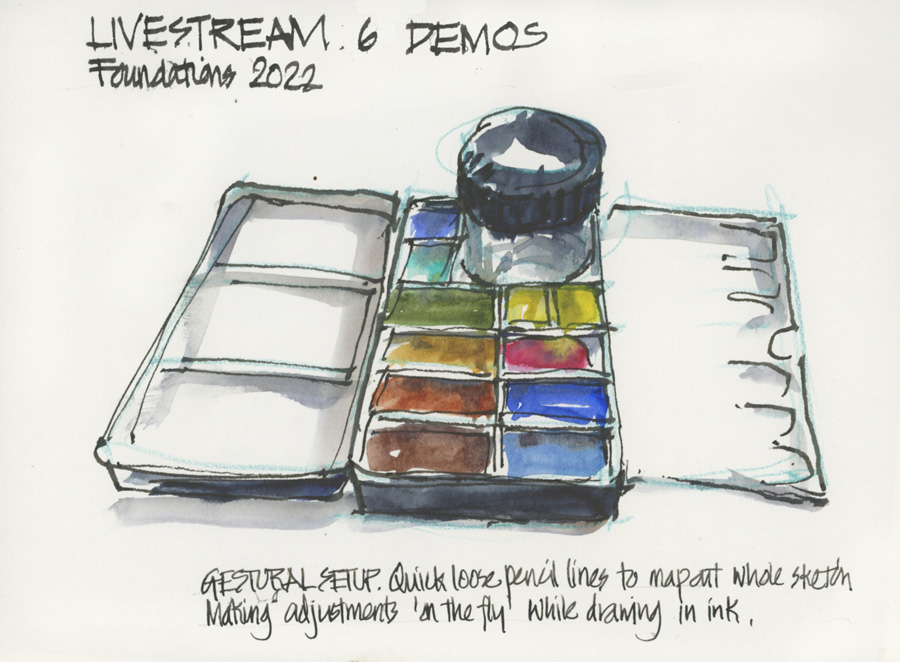
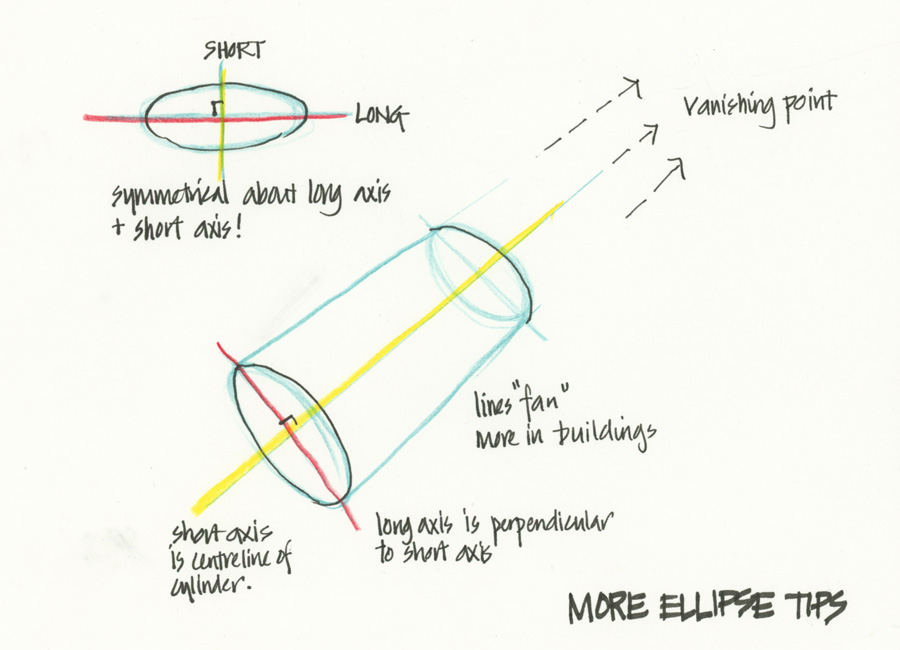




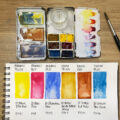
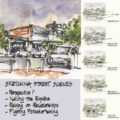
4 Comments
Seeing all these examples of the different methods of setup in one place is so helpful! Loving the Foundations course!
Thanks Jamie. I’m loving going through Foundations too and glad that you are in the group.
Not sure whether I get the ellipses… If the object itself is oval shaped, then if you would roll it over keeping the long axis in the exact same direction, the short axis would turn and no longer be perpendicular to the long one in the drawing. If the object is round, if you were to draw a vertical short axis on the object (say, on the tube lid), that line would be vertical in the drawing too – unless you use three-point perspective. So, the highest point of the circle would be exactly above the lowest point. Btw, if you were to draw a horizontal line, that would follow the rules of perspective, so the left and right extremes of the tube lid in your drawing are not at the same height.
Hi Linda – thanks for your comments!!!
If the object is oval to start with then these rules don’t apply. The vertical centreline of a circle (which is the highest point when looking straight on) isn’t in fact the highest point of the resultant ellipse shape when the circle is in pespective. This is the big ah-ha moment! Very hard to describe verbally… but it’s something I’ve gone through a number of times in livestreams for my current Foundations Group Run-through.
The safest way to draw a circle in perspective is always to draw the surrounding box.
NEWSLETTER
Subscribe for first notification of workshop + online classes and more.